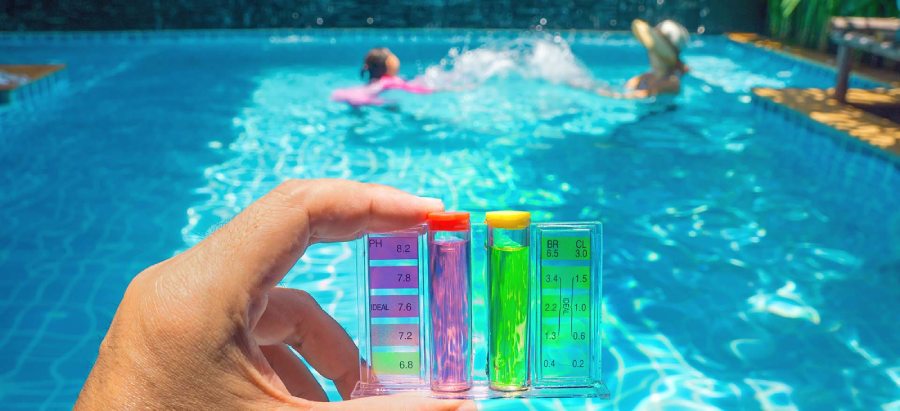A well-designed swimming pool is not only a centerpiece of leisure and relaxation but also a testament to meticulous planning and maintenance. Achieving the perfect harmony between pool design aesthetics and effective chemical treatments is crucial for ensuring both visual appeal and safe, clean water. This comprehensive guide explores the integration of pool chemical treatments with design considerations to create a pristine and inviting aquatic environment.
Understanding Pool Chemical Treatments
1. Chlorine and pH Balance: Pool chemical treatments primarily revolve around maintaining proper chlorine levels and pH balance. Chlorine effectively sanitizes the water by killing bacteria and algae, while pH balance ensures that the water is neither too acidic nor too alkaline, thereby optimizing chlorine’s effectiveness.
2. Algaecides and Clarifiers: In addition to chlorine, algaecides and clarifiers play vital roles in pool maintenance. Algaecides prevent algae growth, which can mar the pool’s aesthetic appeal, while clarifiers help in removing fine particles that cloud the water, enhancing its clarity.
3. Shock Treatments: Periodic shock treatments are necessary to oxidize organic contaminants like sweat, sunscreen residues, and other pollutants that can accumulate in the water, maintaining water clarity and hygiene.
Integrating Chemical Treatments with Pool Design
1. Material Selection: The materials used in pool construction can influence the effectiveness of chemical treatments. Non-porous materials like fiberglass and properly sealed concrete are easier to maintain and require fewer chemicals compared to porous materials like certain types of tile or untreated stone.
2. Water Features and Circulation: Incorporating water features such as waterfalls, fountains, and jets not only enhances the aesthetic appeal of the pool but also promotes water circulation. Proper circulation helps distribute chemicals evenly throughout the pool, ensuring uniform water quality.
3. Lighting and Heat: Efficient pool lighting not only extends usability into the evening but also aids in monitoring water clarity. Heating systems, while not directly related to chemical treatments, can impact water temperature, which in turn affects the rate at which chemicals break down and the growth of bacteria and algae.
Design Considerations for Optimal Chemical Efficiency
1. Pool Shape and Depth: The shape and depth of a pool can influence water circulation and chemical distribution. Irregular shapes or excessively deep areas may require additional circulation points or increased chemical dosages to maintain uniform water quality throughout the pool.
2. Landscape Integration: Surrounding landscaping can impact pool maintenance. Trees shedding leaves directly into the pool, for example, may increase the demand for chemicals. Proper landscape planning can mitigate these issues and reduce chemical usage.
3. Maintenance Accessibility: Designing the pool with easy access to filtration systems and chemical treatment points simplifies maintenance tasks. Accessibility ensures that pool technicians can perform routine checks and adjustments efficiently, reducing the likelihood of water quality issues.
Conclusion
Harmonizing pool design with effective chemical treatments is a balancing act that requires careful consideration of both aesthetic preferences and technical requirements. By integrating proper pool design principles with conscientious chemical treatment practices, pool owners can create an inviting oasis that not only looks stunning but also maintains optimal water quality and safety standards. Whether designing a new pool or renovating an existing one, prioritizing this harmony ensures a long-lasting and enjoyable aquatic experience for all.
Also Read:-


